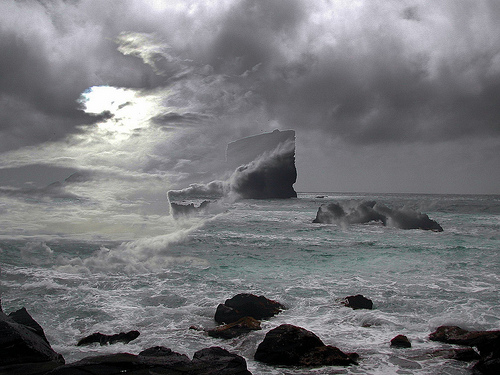STUDY: Vocabulary
Vocabulary

The ocean and atmosphere currents are closely linked. Image courtesy of JMVerco/Flickr.
Air Mass: large body of air that has the same properties as the surface over which it develops
Albedo: fraction of solar radiation that is reflected back to space
Anemometer: instrument used to measure wind speed
Barometer: instrument used to measure air pressure
Climate: average weather of an area over a period of 30+ years
Climatologist: scientist that studies climate
Dew Point: temperature to which air must be cooled to be saturated
Front: boundary between 2 air masses
Humidity: the amount of water vapor held in the air
Hurricanes: tropical, cyclonic storms that produce winds that travel at 120-240 mph
Hygrometer: instrument used to measure humidity
Precipitation: water falling from clouds
Relative Humidity: percentage of moisture in the air
Revolution: amount of time it takes Earth to complete one trip around the sun; 365 days
Rotation: amount of time it takes Earth to complete one spin on its axis; 24 hours
Saturated: when air contains as much moisture as it can possibly hold; relative humidity is 100%
Supercells: most powerful thunderstorms; required for tornado formation
Tropic of Cancer: located at 23.5 ºN latitude
Tropic of Capricorn: located at 23.5 ºS latitude
Vortices: spinning columns of air
Weather: describes present state of the atmosphere and current conditions.
After you have completed this part of the lesson, you can check the associated box on the main course page to mark it as complete